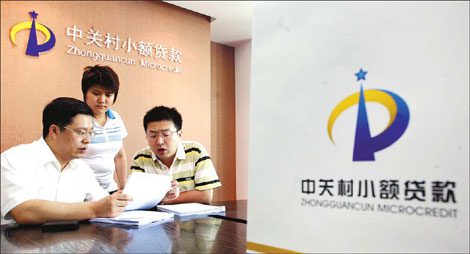News
Government aid driving growth of SMEs in HSP
By Lu Wei (China Daily)
Updated: 2010-09-14 08:05
 |
Large Medium Small |
|
Businessmen talk with an HSP government official about a loan plan. Photos provided to China Daily |
Haidian Science Park (HSP) is now home to 25 new listed enterprises.
Nearly 160 business established in the core of the Zhongguancun national innovation model park have gone public, accounting for one 10th of the nation's listed companies.
As China's first national high-tech industrial zone, HSP has been combining science, technology and finance for more than two decades.
Gov't support
HSP is hardly short on talent. The park partners with 68 colleges and universities, as well as 213 research institutions. It employs nearly 400,000 professionals and technical personnel.
"China does not lack entrepreneurs with creative spirit. But many small and medium sized enterprises (SMEs) don't have access to adequate financing," said Gregory W Becker, president of Silicon Valley Bank in the United States.
Tech-based SMEs are frequently regarded as high risk by financial institutions, denied loans, and subsequently faced with a shortage of capital.
Haidian district created its first local innovation fund in 1999. It provides 30 million yuan each year to assist enterprises with technological innovation, accelerated transformation and international marketing strategies.
Over the past 10 years, the government-initiated fund has handled the declaration of 1,808 pieces, 749 of which were approved with 252.3 million yuan in support.
Multi-level service
Government funds, however, will not be sufficient for many HSP technological enterprises. A multi-level financing system for science and technology projects is necessary.
Park officials strongly support the establishment of commercial banking institutions in HSP. They also encourage venture capital institutions to support the development of SMEs.
Recently, HSP established a venture capital leading fund with an annual investment of 70 million yuan. The park also provides additional financial support and services to help SMEs become listed.
Efforts are similarly directed at developing small loan companies able to back emerging SMEs.
In the first half of 2010, the number of financial institutions and branches in Haidian district stood at 1,460.
Currently, 88 financial institutions - including banks, insurance companies and equity investment firms - are located in the district's Zhongguancun quarter.
"Loans are much easier to obtain than before. Now, for example, they do not require collateral," said Shi Rongju, financial manager of Beijing's China Cotton-unis company.
"We used to request a loan from the bank and then go through a series of complex procedures. Now we cooperate with the small loan companies and receive 20 million yuan within a month."
Backed by strong government policies, the financial sector in Haidian has seen full swing development.
Currently, the district has attracted a combined financial asset worth of nearly 50 trillion yuan, which has aided the takes-off of local SMEs.
Since this year, Beijing municipal government has set higher sights for Haidian, aiming to build the district into a financial center to better service technology innovation.
It envisions the district to become a pilot area to boost financial innovation and reform and strives to build it into a financial innovation center with paralleling international influence of its technology strength.
(China Daily 09/14/2010)
